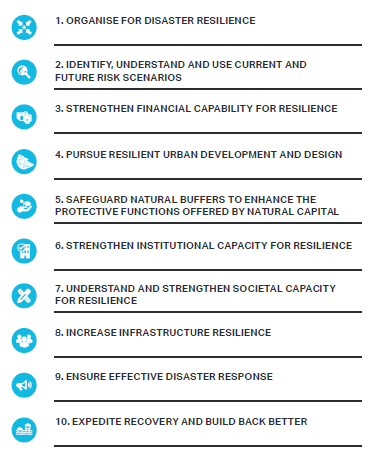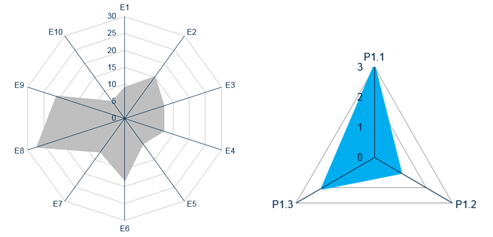Disaster Resilience Scorecard for Cities
Disaster Resilience Scorecard for Cities is a tool that allows local governments to monitor and review progress and challenges in the Implementation of the Sendai Framework for Disaster Risk Reduction and to enable the development of a local disaster risk reduction strategy. It is based on the “Ten Essentials for Making Cities Resilient”, that are able to cover many of the issues that cities need to address to become more disaster resilient. In detail, they concern governance and financial capacity, planning and disaster preparation and disaster response and post-event recovery.
The Scorecard is designed as a flexible tool, based on a multi-stakeholder approach, and can be used as a standalone instrument.
The tool can provide a number of benefits, such as:
- supporting cities in establishing a baseline status of their disaster resilience,
- increasing awareness about resilience,
- promoting dialogue and consensus among city stakeholders,
- enabling discussion of priorities for investment and action, and
- possibly leading to their implementation.
Scoring in the Disaster Resilience Scorecard for Cities can be done at two levels: preliminary and detailed. The choice of the most suitable level depends on time and resources availability as well as the aim of the evaluation. Practical implementation of the Scorecard evaluation is carried out via a supporting MS Excel spreadsheet. It allows recording of scores, comments and suggested actions for each of the Ten Essentials and their sub-categories, collected during consultation (i.e. workshops, interviews) with the involved internal and external actors. In detail, for each of the Essentials, a number of issues is identified, and for each of the issue a score must be assigned.
Once the all the evaluations are performed for each issue, an overall score is generated for the assessment. Additionally, a representation of results on each essential is provided in graphical form, and a representation of results for each sub-issue is generated.


The use of the Scorecard within UNaLab
The application of the Disaster Resilience Scorecard for Cities in UNALAB is specifically intended to measure resilience against natural disasters related to climate change (i.e. floods, drought, wild fires, etc.). For the scope of this work, the preliminary level of implementation provides sufficient information and satisfactory results.
The first self-assessment of the current level of resilience of the city is not only useful to depict a baseline status, but especially to identify priorities at urban scale and provide strategical indications for actions aimed to improvement in defined time horizons.
The implementation the implementation of the Scorecard methodology can be performed through the following general procedure, to be tailored according to the specific needs of each municipality:
- Identification of actors to be involved;
- Invitation to working group;
- Preparation of the participants before the workshops;
- Workshops
- Collection, summary and interpretation of results
Genova Case Study
The activities for the UNISDR Disaster Resilience Scorecard for Cities assessment have been performed in Genova in 2019. A dedicated focus group has been instituted for this specific purpose, composed by two representatives of the municipal structure (Resilience Office), guided by RINA-C. Periodical meetings were held in a 5-months timeframe, in compatibility with the actions developed and acknowledged by the exercise itself
The overall score for this assessment is 84/141, which might be simplistically interpreted as a “sufficient” level of evaluation. The representation in radar graph facilitates the visualization of the balance among the different “essentials”, where the grey area delimits the maximum points achievable along the ten parameters, and the blue area depicts the respective results of the self-assessment for Genova.
